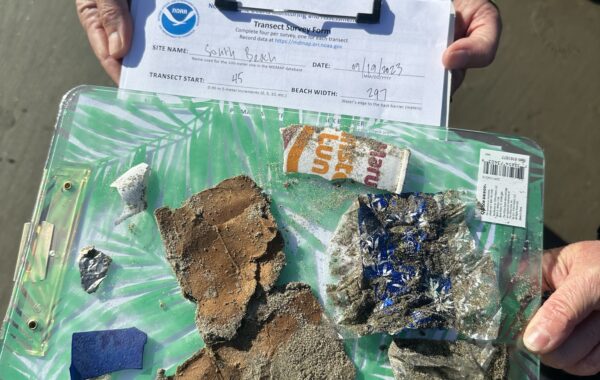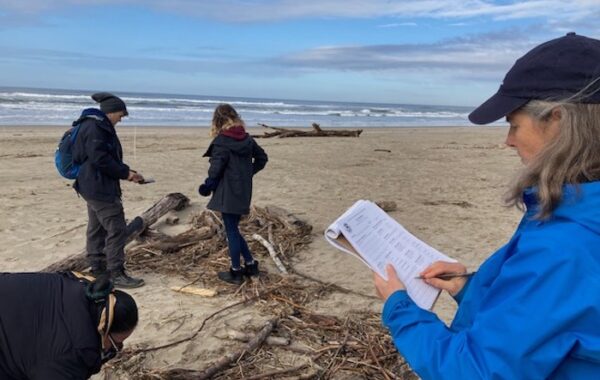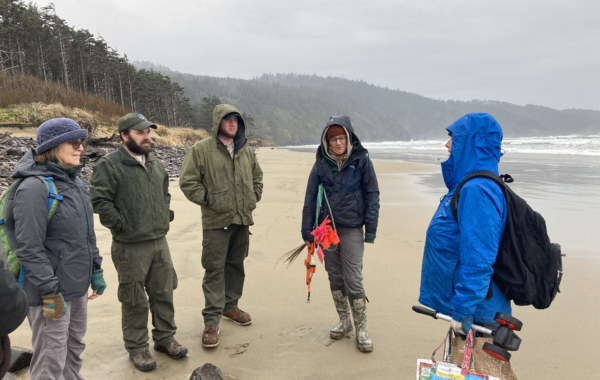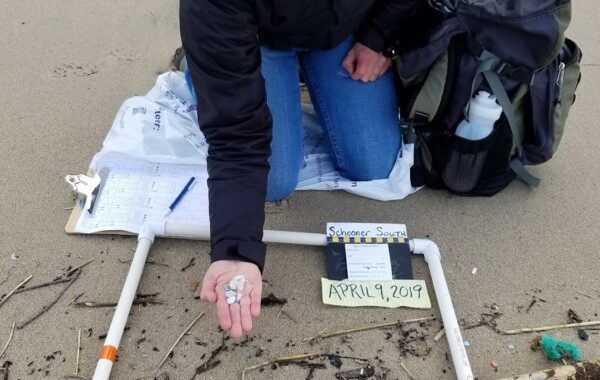Community Science
Is there a marine debris survey happening on your mile? You can choose to routinely conduct surveys and record information that can be used to compare amounts, locations, movement, sources, and impacts of marine debris across the United States and internationally.

The Marine Debris Monitoring and Assessment Project
The Marine Debris Monitoring and Assessment Project (MDMAP) is a National Oceanic and Atmospheric Administration (NOAA) initiative that engages partners and volunteers nationwide to survey and record the amount and types of marine debris monthly on five-meter sections of the same 100 meters of shoreline every month that it’s safe to go out. Participants work with CoastWatch to choose a site, and most volunteers choose to survey within their mile. CoastWatch volunteers have started 17 survey sites on the Oregon coast. Some work in groups; for example, in Neskowin, neighbors work together to walk their CoastWatch mile and conduct a marine debris survey once a month. CoastWatch staff assists volunteers in setting up a site and then trains volunteers for this survey year-round. Training and setting up a site can be done on the same day. Choose a low-tide day and plan for the weather! Contact the CoastWatch Program Manager for help planning.
Coastal Observation and Seabird Survey Team
The Coastal Observation and Seabird Survey Team (COASST) also offers a marine debris protocol. Volunteers monitor 2-8 hours monthly on a site chosen with COASST staff’s input. The total amount of time spent surveying will be variable depending on the width (from the base of the dunes to the tide) and length of your beach, the number of surveyors, the weather, and how much debris you find. There are three types of marine debris surveys with COASST (small, medium, and large), and participants have the option of doing one, two, or all three. COASST staff is in Washington State on the University of Washington’s campus. They have a two-part training; COASST Light is the virtual piece, and then COASST staff travels to train volunteers at community colleges and libraries on the West Coast.

Why Conduct Marine Debris Surveys?
Marine debris is almost a constant on any stretch of beach. Reports submitted by CoastWatch volunteers nearly always include photos of what they found and descriptions of what they did with it. Some take it home, some report items too large to take off the beach to a ranger, and some place it in a bin at a state park. Many CoastWatch volunteers who want to submit their findings for science have joined one of two surveys developed by the National Oceanic and Atmospheric Administration (NOAA) or the Coastal Observation and Seabird Survey Team (COASST).

Ready to get involved?
To join a community science project, start by adopting a CoastWatch Mile.

Community Science
